Perfect technology for the perfect soldier. Part of 2
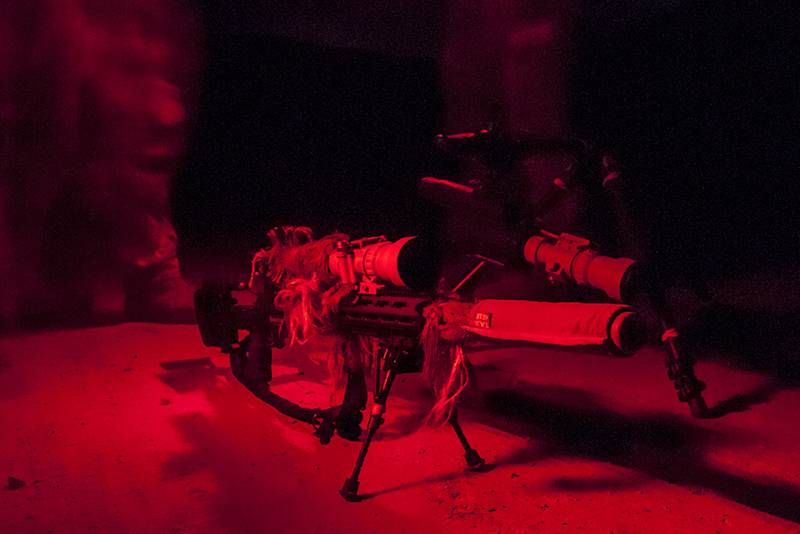
Silencers are gaining increasing popularity in the military, as the military see the benefits of reducing the acoustic and visual signs of visibility inherent in rifle arms.
Artificial Intelligence
Many in the NATO MTR believe that artificial intelligence may soon be integrated into devices of an automated operational management system operating in infantry and special units. This will optimize and accelerate decision-making processes in a combat situation. In general, although the further spread of artificial intelligence to support the modern soldier should still reach the lowest tactical level, the military wants to take advantage of wearable (portable) technologies in the near future.
At present, artificial intelligence is being used to support large data centers at the operational and strategic levels in processing, analyzing and distributing intelligence and observation data. However, work is underway to reduce form factors and energy needs with a view to its involvement at the tactical level.
Signature Management and Mortality
At the tactical, lowest point of the battlefield, a modern soldier must be able to avoid detection so that he then has the desired effect on the enemy in order to successfully accomplish the task. The armed forces are paying special attention to this, directing their efforts towards meeting new urgent requirements, including the fact that small units have the opportunity to avoid detection of electromagnetic signatures (EMC) in the whole spectrum.
The United States Marine Corps (ILC) is seeking to implement several short-term upgrades in order to provide soldiers with solutions for current and emerging operational needs. Corps wants to identify means of reducing soldier signatures, including activities to minimize EMC associated with wearable and portable C4ISTAR devices (Command, Control, Communications & Computers; Intelligence, Surveillance, Target Acquisition & Reconnaissance - command, control, communications, computers, information gathering, observation, target designation and reconnaissance). Measures are evaluated and proposed to reduce noise and acoustic signatures of personal weapons, as well as physical signs of signature. associated with camouflage and other camouflage systems. In practice, the ILC continues to develop its experimental and training programs to define the lessons learned. Appropriate technologies are being developed to reduce EMC and physical signatures.
According to a Corps representative, “We strive to integrate the“ free play of combat forces ”into field exercises. This makes it possible to receive real-time feedback from soldiers on all signs of conspicuity generated on the battlefield, whether radio frequency, physical, or sound signals. ”
“We abandoned them when fighting against extremist organizations, as they seemed less important at that time,” he said, hinting at operations against the Islamic state (prohibited in Russia) and its branches throughout the Middle East, in the Pacific region and Africa.
Specific technologies that reduce a significant portion of signatures when performing a combat mission include silencers printed on an 3D printer. They can really help modern soldiers in the management of physical and sound signatures. In addition, this technology provides an additional advantage for infantry and SSOs operating in populated areas.
As an example, the Brevis III model from Delta P Design is the newest option in its line of silencers, manufactured using the 3D-printing method and specially designed for MTR and infantry and reducing physical and sound signatures. Their use increases the levels of operational control and ownership of the setting. An additional advantage is that these silencers exclude the ingress of powder gases in the face of the shooter.
The Brevis III silencer, made from a solid titanium bar, is 120 mm long; it can be attached to flame arresters of personal weapons, including the Heckler & Koch MP7. Weighing only 235 grams, the Brevis III can also be mounted on larger systems, including assault rifles, carbines, light and even heavy machine guns.
In order to optimize accuracy and lethality, a modern soldier will soon receive various devices and systems installed on helmets and weapons systems of the next generation. They will undoubtedly increase the levels of situational awareness, as well as simplify the process of finding and capturing targets.
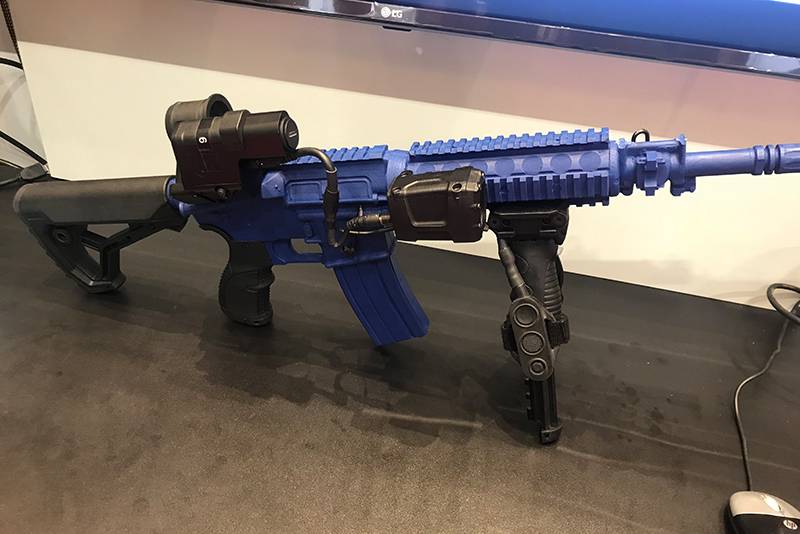
Elbit Systems Company is constantly improving its SmartSight scope in accordance with the requirements of users for networked optical sights with augmented reality.
For example, in July 2018, as part of a technology demonstration program at the Infantry Training Center of the German Army, a SmartSight was demonstrated by Elbit Systems. A representative of the German company Telefunken Racoms (distributor of Elbit Systems in Germany) said that this scope continues to be improved in accordance with the operational requirements arising.
The sight can be used as a separate device or as a "consistent" system; in this case it is installed behind a collimator sight or magnifying optics. It provides the operator with the function of “augmented reality superimposed on the image of the target”, which can also be integrated into wider promising solutions, including the Dominator combat equipment from Elbit.
The SmartSight itself includes a GPS module and an inertial positioning unit with a compass, as well as an integrated laser rangefinder manufactured by Jenoptik. According to a company representative, the scope also allows "to capture targets and send relevant information to operational control systems thanks to an integrated tactical radio system." SmartSight has an increased structural strength, allowing it to work with it in difficult combat conditions and eliminate the impact of weapon recoil on the accuracy and stability of optics.
A three-button control unit, mounted on the fore-end or rail, duplicates the manual controls located on the SmartSight itself, but at the same time allows the arrow to mark the target or object of interest with the help of the built-in reticle. The image can be recorded and transmitted over the network to the operational control system or the automated control system for the combat means control. The control system records information and transmits it via the MANET network or alternative networks to other shooters or divisions.
This allows other soldiers from different firing groups, squads or platoons to visually scan the battlefield not only with their own SmartSight, but also to obtain information about their own or enemy forces, as well as about objects of interest as they pass through the sighting grid of any SmartSight to the general network. In addition, SmartSight can generate relevant information about the target, including GPS coordinates and range.
Elbit Systems is currently working on upgrading the existing SmartSight scope in order to enhance the capabilities of soldiers operating in a complex combat space. Possible improvements include the addition of a color display with overlaying maps from the information management system. A total of six prototypes have been manufactured to date, although a company representative did not disclose the number of sights sent to the German army for evaluation.
Telefunken Racoms has now integrated its SmartSight scope into a broader concept for a future soldier. This will allow soldiers of infantry and special units wearing the Raptor device to take advantage of several technologies at once, including the Torc2h operational control software; communication through personal radio station PNR-1000; night vision goggles; Sight SmartSight: and SmartTrack; The latter device is used to generate location, navigation and tracking data in the absence of a GPS signal.
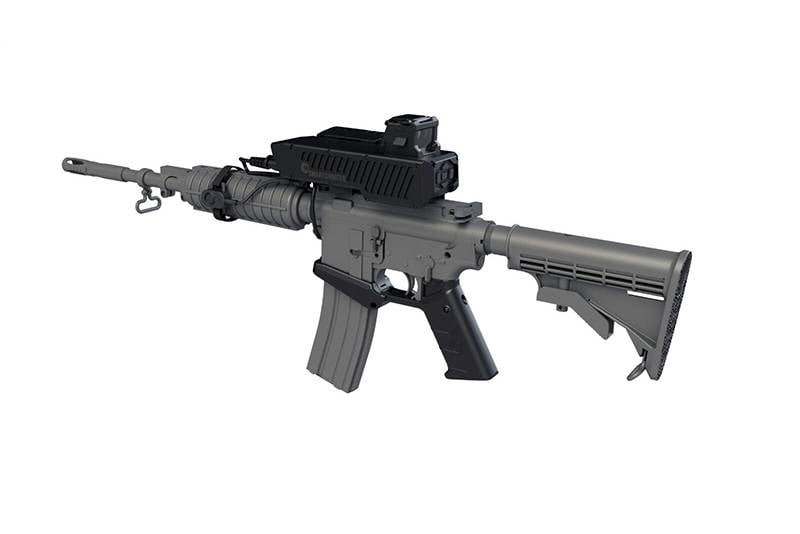
The Israeli army plans to evaluate hundreds of SMASH sights in an effort to increase the likelihood of hitting from the first shot, which is very important for dismounted melee soldiers
Such a system - the SMASH optical gunsight from SmartShooter - is undergoing evaluation tests in the Israeli army. SMASH is a fully integrated fire control system that mounts on the Picatinny rail of an assault rifle or carbine. It allows you to increase the likelihood of hitting the first shot, especially when shooting at moving targets at increased distances. According to the available information, several hundred SMASH sights must pass an evaluation test in the Israeli army by the end of September 2018.
It is clear that the Israeli army evaluates several models from the SMASH family at once, which includes SMASH 2000 variants; SMASH 2000 Plus; SMASH 2000M; and SMASH 2000N.
All of these fire control systems are distinguished by a translucent optical display and an optoelectronic / infrared sensor that detects targets and capture them for tracking. All models are made in accordance with the standard MIL STD 810 in order to exclude any influence of recoil of the rifle on the accuracy of the sight.
The “Plus” option includes a recording device to simplify polling and parse the results of the task during the preparation and execution of combat missions, while the “2000M” version has an increase in x4 for work at long distances. Finally, the “2000N” model includes an infrared sensor for actions in conditions of poor or zero visibility in addition to the increase in x4.
The SMASH sight can also be used in other special tasks, including anti- drones. A company representative explained that the SMASH family of systems can be used to provide “kinetic protection” against completely new threats as well. “High-precision anti-drone capabilities with built-in target designation algorithms that allow at distances up to 120 meters to track and hit from the first shot even very small dronesflying at low altitude at high speed.
Digital devices on CMOS structures (English, CMOS, the metal-oxide-semiconductor complementary structure) are becoming increasingly popular in the market as a replacement for more traditional technologies for enhancing image brightness and thermal imaging technologies. They promise the military a significant increase in the level of situational awareness and improvement in the process of target detection in melee in low or zero light conditions.
An example is the Rochester Precision Optics (RPO) CMOS night vision device CNOD (CMOS Night Observation Device), which is currently in service with the US SOF. It is used as a stand-alone handheld device for advanced aviation gunners and counter-observation on the battlefield, as well as an optical weapon sight, mounted on assault rifles, carbines and even pistols.
Austrian company AD2V (Absolute Darkness To Vision - from absolute darkness to vision) brought the CMOS concept to the next level with its solution for digital night vision goggles Luxiter PM1. According to some reports, these systems are already in service with an unnamed subdivision of the OSS of one of the European countries.
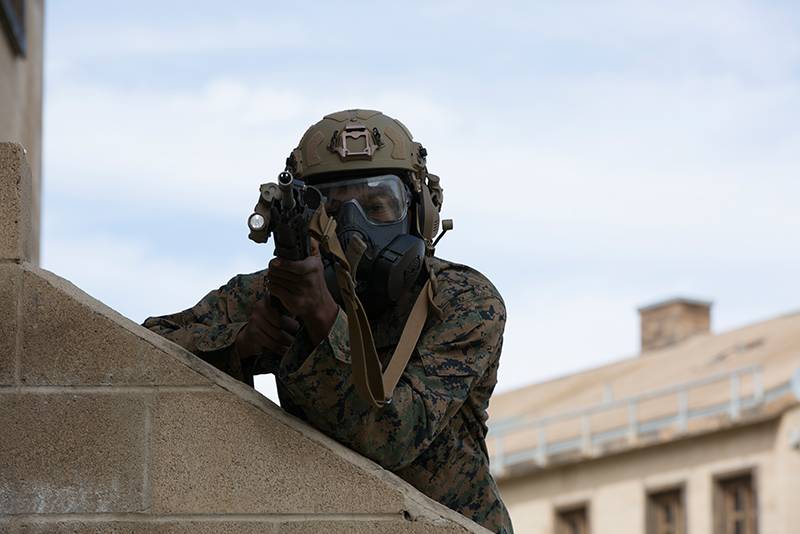
Information from rifle scopes with augmented reality should be clearly visible through various transparent elements of equipment worn on the face, for example, protective anti-bullet glasses or gas mask
“The Luxiter system provides unique analog and digital interfaces, for example, exporting video taken in low-light conditions for recording or transmission over a radio system. It can import information from external sources, management teams, including text, ”said Wilhelm Gronauer from Griffity Defense (a distributor for AD2V in Germany).
The Luxiter sight can be worn under goggles to maintain the required level of ballistic protection, it can also be integrated into the helmet design. It is designed for fighting at very small distances in confined spaces where existing night vision devices may not be suitable.
“Firing weapons or cannon flashes do not affect the operation of the sight, and the ergonomic design and low weight allow using it in motion and even during long operations,” Gronauer said.
The device has adjustable infrared illumination for active and passive work, although it can also be used in daytime conditions for detecting targets, in particular in a space cluttered with extraneous objects, where objects of interest are difficult to distinguish. “The digital black and white screen allows you to better recognize goals and make decisions faster, while instantaneous transitions from darkness to light and back are compensated by the device and this does not affect the user,” Gronauer added.
Having the resolution of the matrix 795x596, the Luxiter display provides the user with several fields of view: 19, 46 and 56 degrees. The device weighs 290 grams without a cable weighing 50 grams, a connector and an additional rechargeable battery, which can be attached to a helmet or a discharge vest. On a single charge, the system can work up to 10 hours, although, according to Gronauer, it has the maximum vision range of all 100 meters.
This digital night vision device can also be supplemented with an Luxiter-EC-2H external night-vision digital camera, which is capable of transmitting full-format video directly to night-vision goggles (or via a programmable radio station).
The Luxiter-EC-2H camera without any harm for its sensors can also be used in daytime conditions, it is not “blinded” by flashes of shots and explosions.
The modern operational environment for the modern soldier remains very difficult. Considering that in the foreseeable future, the likelihood of a collision with equal opponents remains, he must get into his hands many promising solutions aimed at optimizing the ability to establish communications on the battlefield, as well as minimizing his physical and electromagnetic signs of visibility in the face of a highly effective adversary.
The successful spread and integration of these technologies must be very carefully managed in accordance with the cognitive abilities of modern soldiers, who have yet to receive all the advantages of artificial intelligence in dismounted tasks. The day will come when the soldiers will be fully equipped with human-machine interfaces, portable high-performance sets of C4ISTAR and united into a single network. At the same time, the problem of cognitive overload will retain its relevance for commanders seeking to optimize the capabilities of the personnel of their units.
A light SUV at an exercise held in March 2018. The USMC constantly studies new technologies in order to increase the survival rate, lethality and reliability of communication in the difficult conditions of urban combat.
Ways of development of the USMC
The US Marine Corps is rightfully considered one of the most technologically advanced expeditionary forces in the world.
The USMC actively participates in the development of alternative approaches in order to successfully cope with the complex operational conditions encountered in hybrid hostilities. This includes the development of combat principles and tactics, methods and methods of warfare, as well as the development of weapons, software and hardware and the effective provision of training and combat training.
The representative of the ILC said that at present the armed forces of different countries should be able to operate in all C2D2E (Communications Degraded / Communications Denied Environment - difficult conditions for the operation of communications). "Every soldier, if he successfully wants to complete his task, will have to rely only on reliable digital communications."
However, Michael Macferron from the US Marine 1 Division noted that the optimal solution for equipping the modern soldier has yet to be found.
Macferron called a number of "urgent" requirements, the purpose of which is to maintain the combat potential in an increasingly complex operational environment. At the same time, the ILC continues to implement a broader strategy aimed at further enhancing its expeditionary capabilities.
It includes consideration of a number of main areas that have been identified to promote the development of technologies, combat principles and tactics, methods and methods of conducting combat operations in the period from 2020 to 2035 year.
According to Macferron, all these requirements are aimed at the development of "Modern Breakthrough Technology in 2035 and Beyond." Upgrading weapons, equipment and equipment will support the basics of maneuverable military actions of the USCM, including military clashes, security cooperation, deterrence, crisis response, limited operations in special situations and large-scale military operations.
The ILC takes into account the growing importance of the information space, and also considers the integration of additional infantrymen into the squad (usually 10-15 people) in order to meet the growing need for C4ISTAR technology at the tactical level. Macferron also noted that the US KMP is seeking to introduce UAV and NMR technologies at the lowest tactical levels.
Of particular interest is the increase in the levels of situational awareness, including the creation and distribution of a common operational picture, which will allow infantry and special units to obtain detailed operational information about the combat space. In order to develop these capabilities, the USCM is considering the introduction of end-user devices, including smartphones and tablets, at the lowest tactical levels. This will make it possible to provide each infantryman with his own full-time operational management tools in order to facilitate “information sharing at the branch level”.
Such information and control systems should include technology to track their own, enemy and neutral forces, as well as show routes for entering and leaving the target area. In addition, the system will provide units with intelligence-sharing equipment throughout the battlefield.
US Special Operations Forces Command Approach to Future Operations
The US Special Operations Forces Command (USSOCOM) is conducting a series of technical experiments that are aimed at identifying next-generation technologies that will help servicemen overcome the challenges associated with modern operational space.
As part of a technology demonstration program called Thunderstorm (Thunder), about which official information appeared in November 2017, a second technical experiment (TE) is being prepared. The first TE was conducted in March of this year, and the Command of Special Forces of the US Land Forces and the Georgia Institute of Technology took part in it.
With the emphasis on supporting “actions of small units in a difficult combat situation”, the first TE considered various technologies currently at the technological readiness levels from 4 to 9 (technology development - testing and production systems).
The official document of the Thunderstorm program describes how the unit can be deployed in a “hostile area”. “The group should be easily equipped and as mobile as possible, this greatly increases the likelihood of successful completion of the combat mission. The operational area may have many physical and electromagnetic limitations. The group must be able at any time to act on all types of terrain (desert, forest, mountains, open, settlement), in vegetation of all types (desert, steppe, shrub, trees, etc.) and in all weather conditions ” .
A representative of USSOCOM said that in the first TE, technologies were considered that were mainly suitable for operations in C2D2E: wireless headsets to improve communication at the tactical level; technologies that increase battery life; helmet displays with augmented reality to increase the level of ownership of the situation; Extended list of sensors, including stenovizory. means of obstructing observation (smoke, etc.); biometric identification systems; and proactive analysis tools.
Tactical communication systems under consideration varied from smartphones with built-in UHF transceivers to tactical LTE and Wi-Fi access points capable of providing communication in a jammed communication environment.
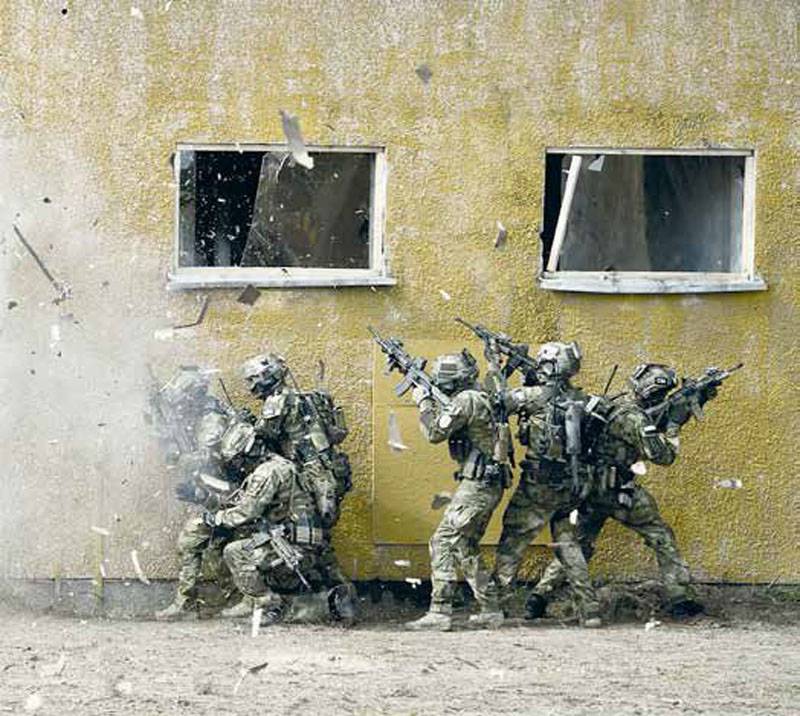
The command also explored a number of autonomous capabilities to support the decision-making process; reduction in the number of personnel. deployed to complete the task; and support for multi-tasking capabilities in various types of terrain. Also in this experiment were considered various unobtrusive unmanned systems with reduced acoustic signatures that could be used in ordinary observation and reconnaissance tasks at the lowest tactical level.
Finally, USSOCOM conducted an analysis of systems for reducing signs of visibility of personnel similar to those that the ILC wants. First of all, these are textile materials that can protect against various detection technologies - radar, electronic, thermal, infrared, visual, optical-electronic, acoustic, etc., as well as camouflage solutions that can make the owner undetectable or unrecognizable. The command also does not mind getting an improved silencer for small arms, which will reduce acoustic signatures, muzzle flash and recoil.
Echoing the needs of the US KMP, representatives of the Special Operations Forces Command say that the technologies covered by the Thunderstorm program should be aimed at “individual mobility and automation of operations in order to limit / reduce the size, weight and energy consumption and reduce / eliminate the load on the soldier ".
A second TE is scheduled for August of this year. Within its framework, technologies related to positioning, navigation, and consistency in the absence or weakness of the GPS signal will be considered. Special attention will be paid to inertial measurement systems and inertial navigation.
In addition, land mobile Robots and wearable and/or portable systems that can capture "tunnels, buildings and streets" in real time. Finally, this technical experiment will test combined communications systems that allow units and battle groups to communicate between the surface and underground facilities.
Materials used:
www.shephardmedia.com
www.defense.gov
us.getac.com
www.heckler-koch.com
www.deltapdesign.com
elbitsystems.com
www.smart-shooter.com
www.ad2v.at
www.alamy.com
www.wikipedia.org
en.wikipedia.org
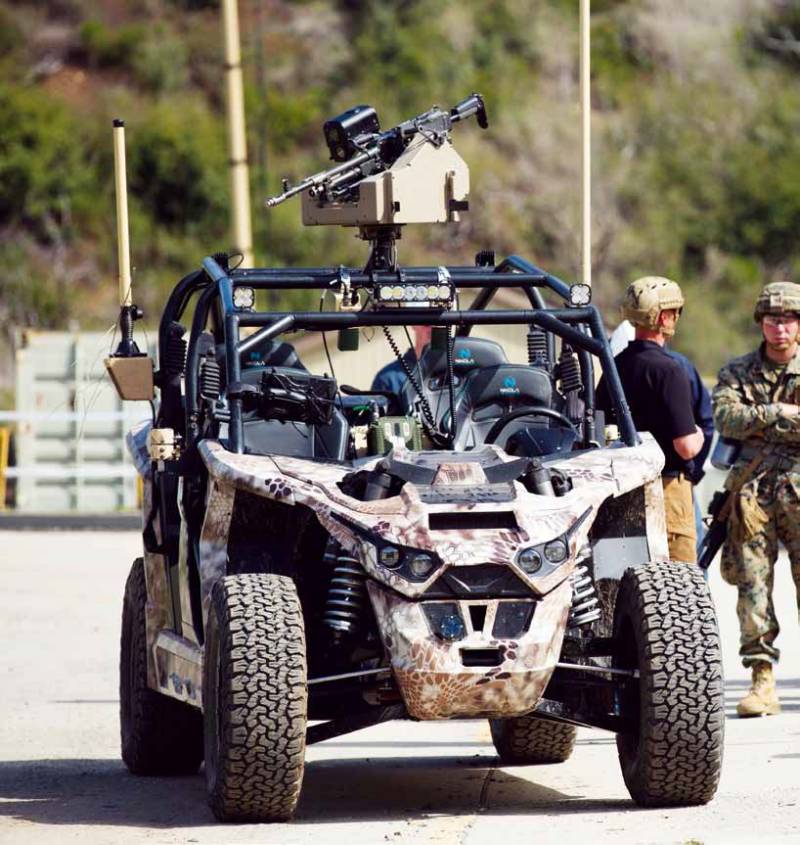

Information